Abstract
The effect of sodium chloride on the respiratory activity of a moderately halophilic halotolerant bacterium was studied. Irrespective of growth conditions, resting cells oxidized succinate at a low rate unless sodium chloride was included in the assay mixture, maximum respiratory rates being obtained for sodium chloride concentrations between 0·2m and 0·8m. Neither potassium chloride nor sucrose could replace the sodium salt. The response of the respiratory system to sodium chloride concentration above the optimum depended on growth conditions. Respiration of cells harvested from a low-salt medium was almost inhibited completely by 2·0m-sodium chloride, and that of cells grown and washed in the presence of 2·0m-sodium chloride by 30%. After preincubation with a growth medium containing 2·0m-sodium chloride, even with all multiplication suppressed by chloramphenicol, the resistance of the respiratory system of low-salt-grown organisms to high salt concentrations increased considerably and resembled that of their high-salt-grown counterparts. A similar increase in resistance occurred after preincubation with yeast extract or with choline. With labelled choline, energy-dependent accumulation of labelled material occurred, the conditions required for maximum accumulation and retention being the same as those that increased the salt resistance of the respiratory system. The chromatographic behaviour of the labelled material indicated that the substance was not choline but a derivative, possibly betaine.
Full text
PDF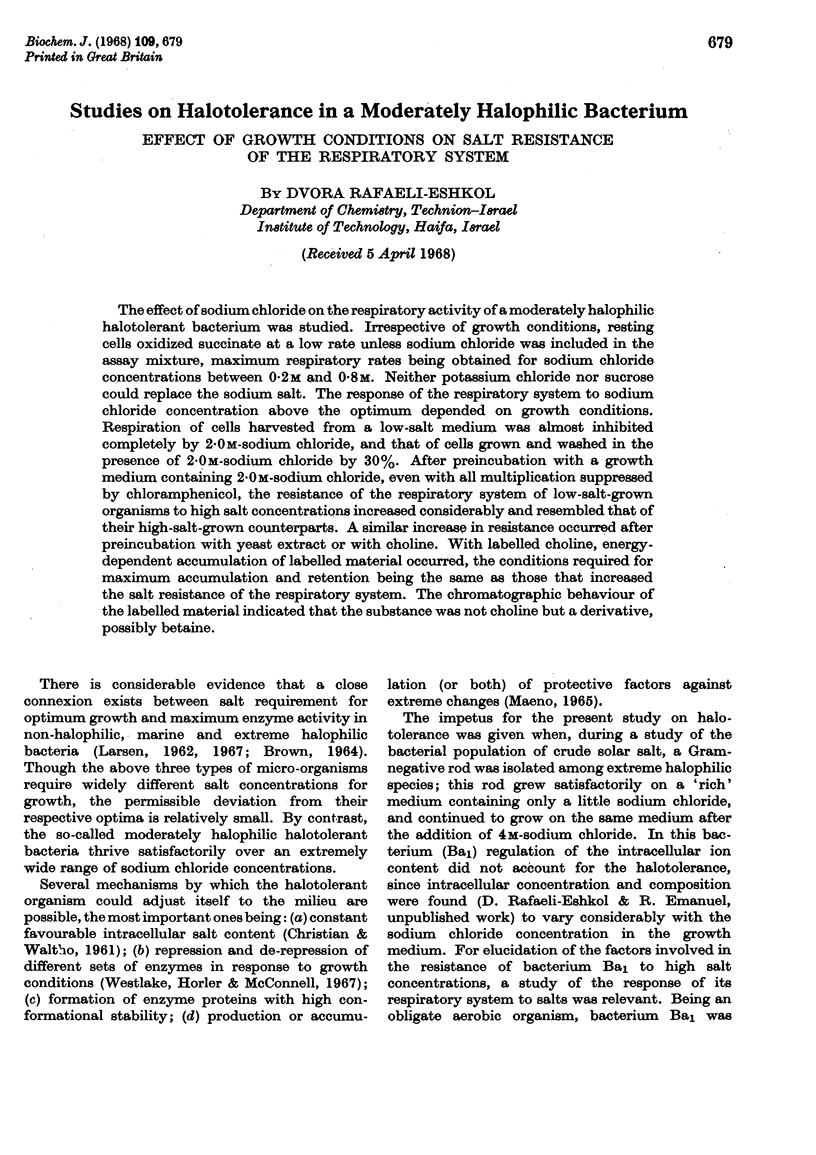

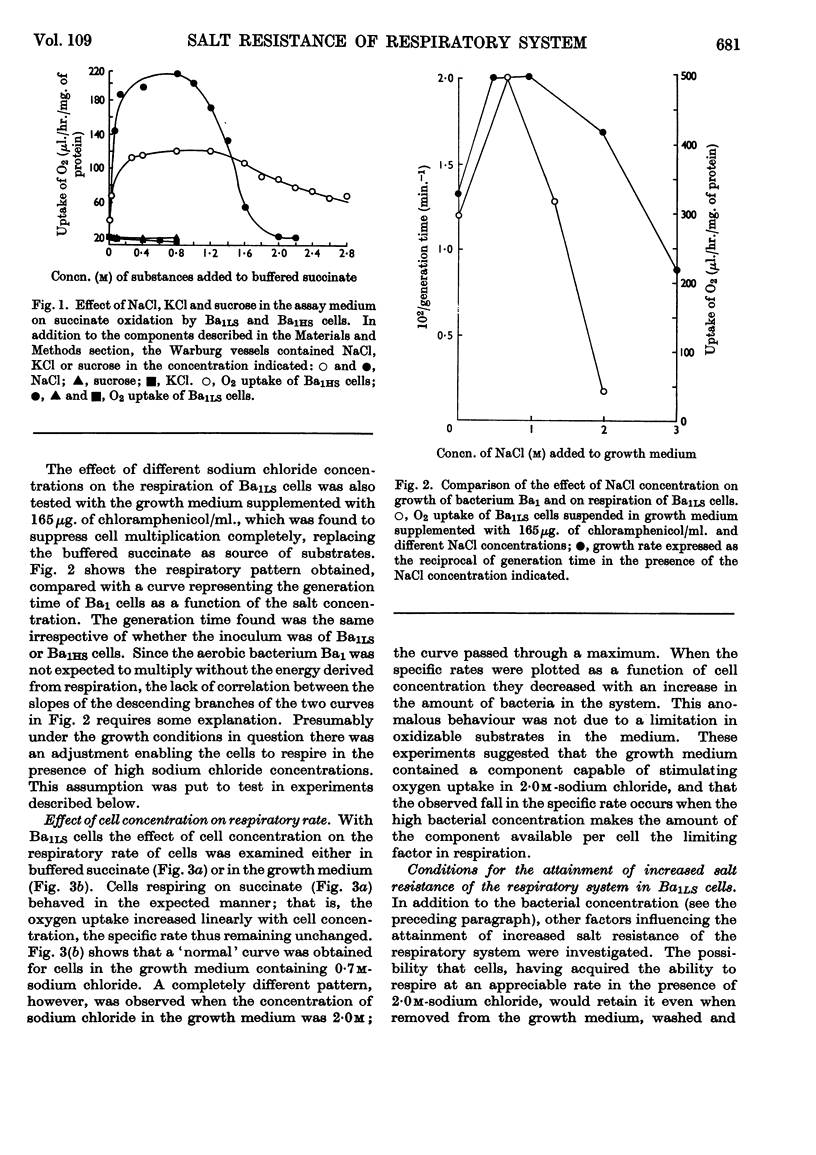
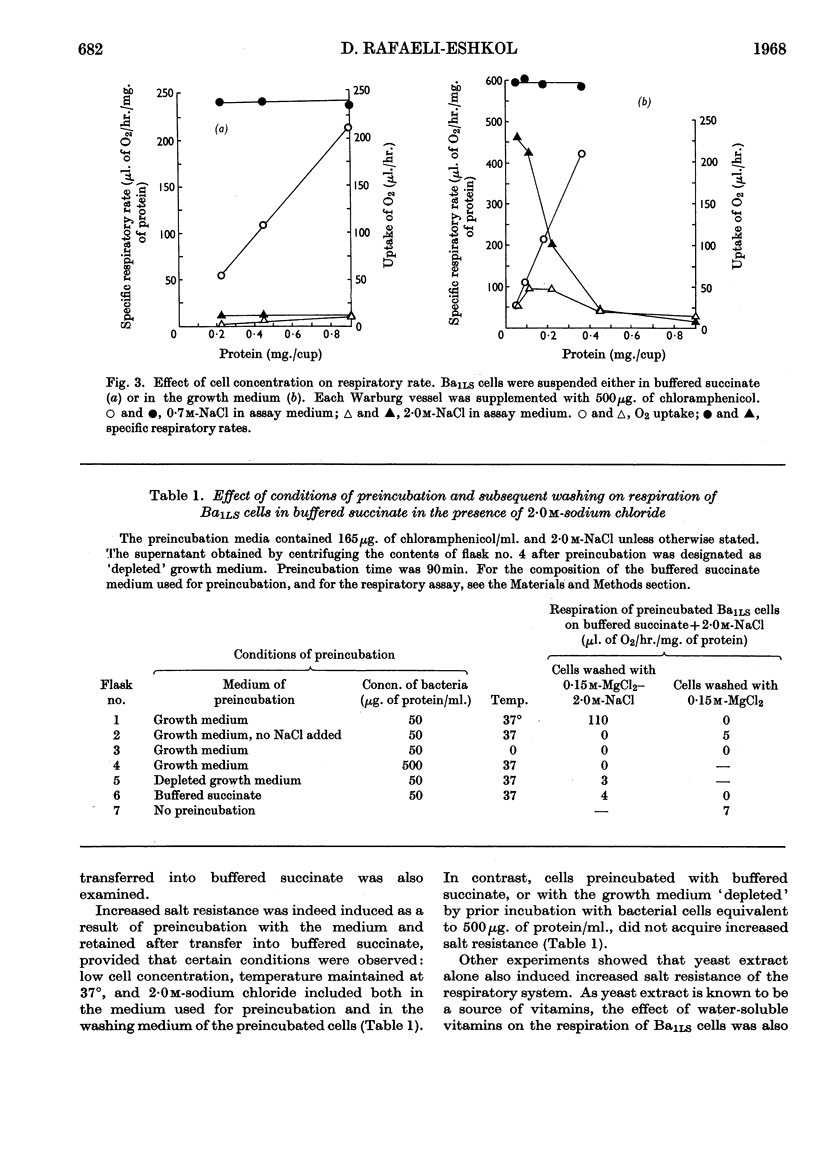
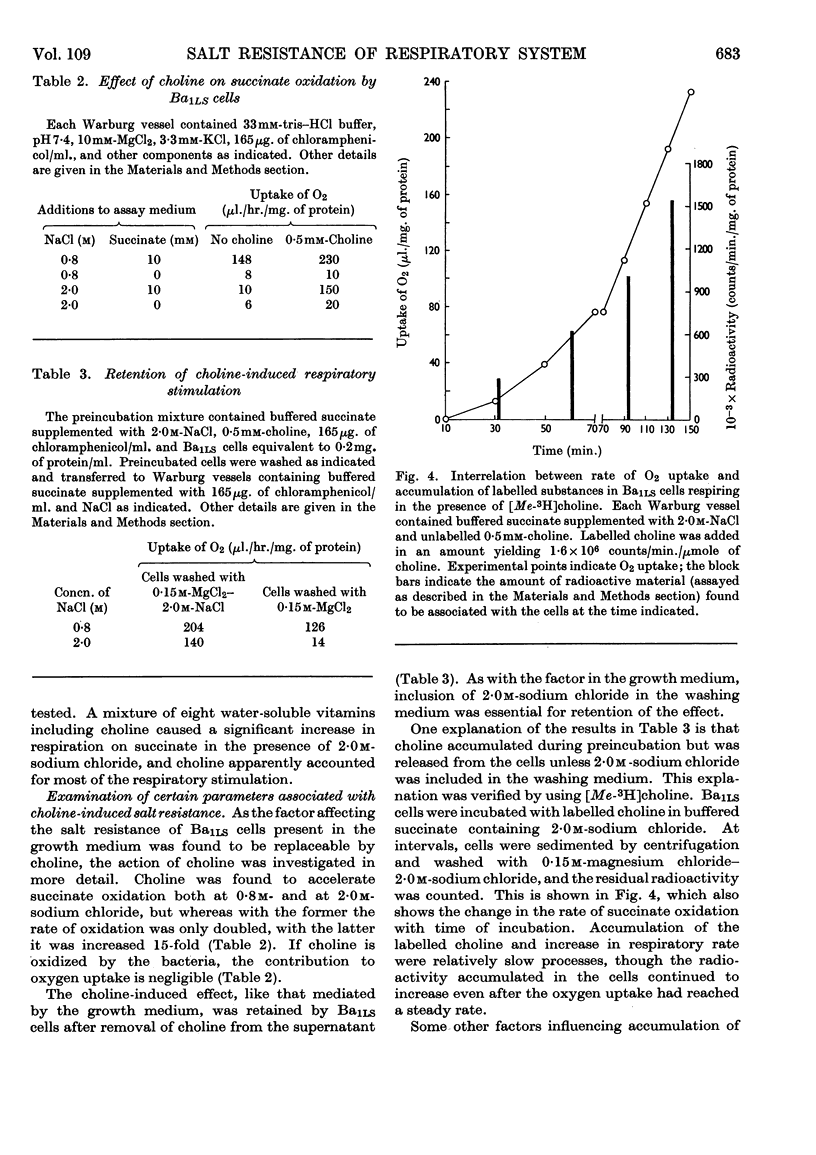
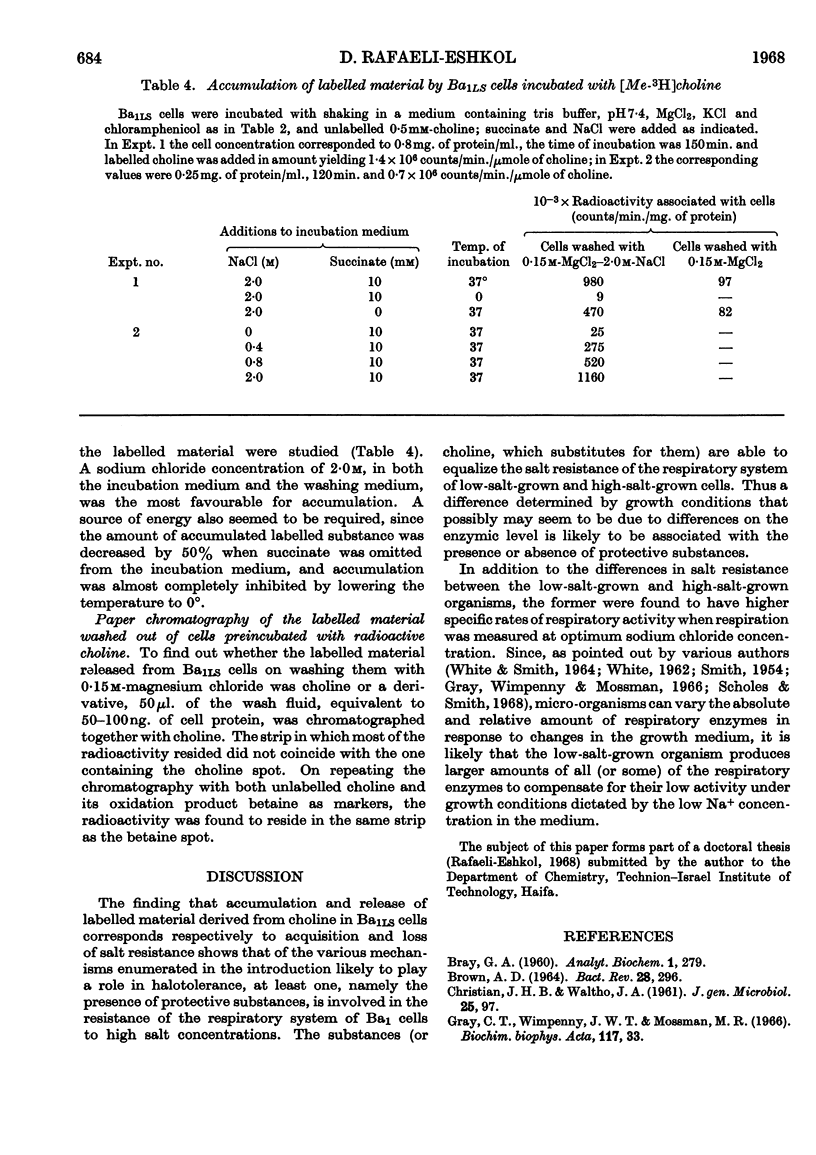
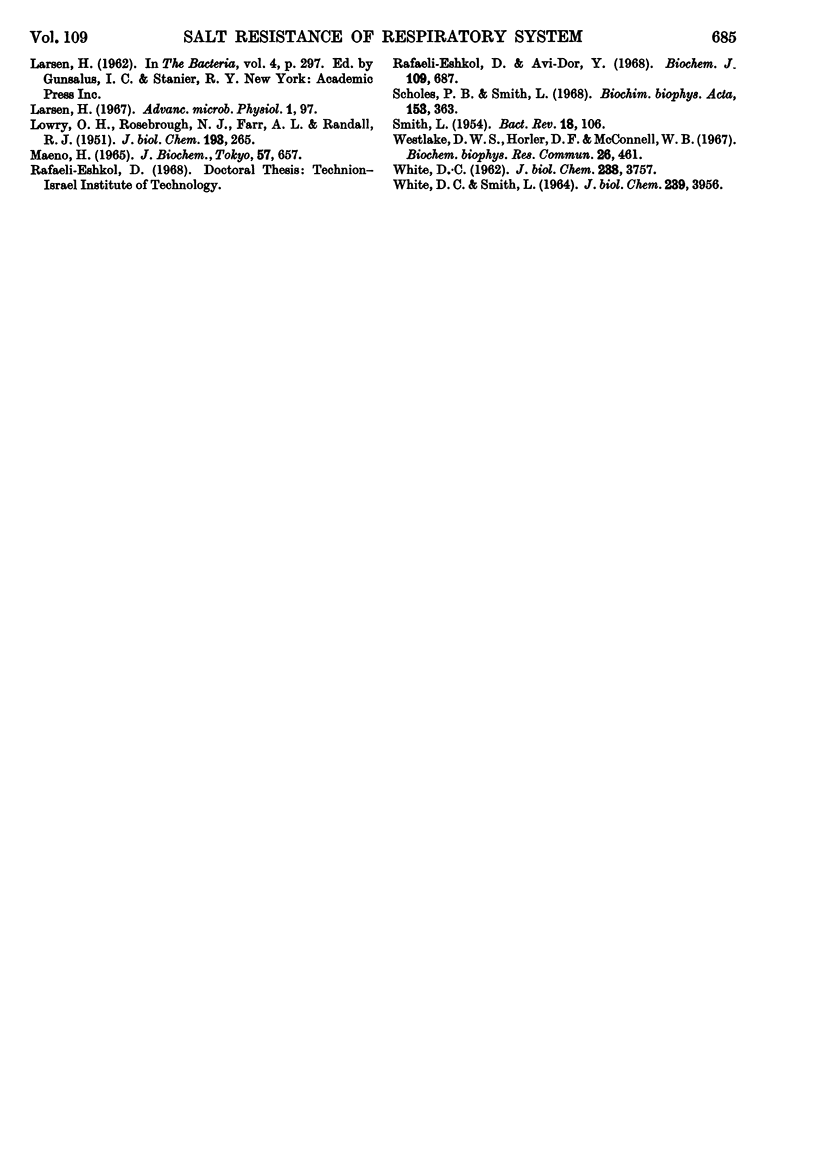
Selected References
These references are in PubMed. This may not be the complete list of references from this article.
- BROWN A. D. ASPECTS OF BACTERIAL RESPONSE TO THE IONIC ENVIRONMENT. Bacteriol Rev. 1964 Sep;28:296–329. doi: 10.1128/br.28.3.296-329.1964. [DOI] [PMC free article] [PubMed] [Google Scholar]
- CHRISTIAN J. H., WALTHO J. A. The sodium and potassium content of non-halophilic bacteria in relation to salt tolerance. J Gen Microbiol. 1961 May;25:97–102. doi: 10.1099/00221287-25-1-97. [DOI] [PubMed] [Google Scholar]
- LOWRY O. H., ROSEBROUGH N. J., FARR A. L., RANDALL R. J. Protein measurement with the Folin phenol reagent. J Biol Chem. 1951 Nov;193(1):265–275. [PubMed] [Google Scholar]
- Maeno H. Halophilic aldose dehydrogenase. J Biochem. 1965 May;57(5):657–666. [PubMed] [Google Scholar]
- Rafaeli-Eshkol D., Avi-Dor Y. Studies on halotolerance in a moderately halophilic bacterium. Effect of betaine on salt resistance of the respiratory system. Biochem J. 1968 Oct;109(4):687–691. doi: 10.1042/bj1090687. [DOI] [PMC free article] [PubMed] [Google Scholar]
- WHITE D. C., SMITH L. LOCALIZATION OF THE ENZYMES THAT CATALYZE HYDROGEN AND ELECTRON TRANSPORT IN HEMOPHILUS PARAINFLUENZAE AND THE NATURE OF THE RESPIRATORY CHAIN SYSTEM. J Biol Chem. 1964 Nov;239:3956–3963. [PubMed] [Google Scholar]
- Westlake D. W., Horler D. F., McConnell W. B. The effect of sodium on the fermentation of glutamic acid by Peptococcus aerogenes. Biochem Biophys Res Commun. 1967 Feb 21;26(4):461–465. doi: 10.1016/0006-291x(67)90569-4. [DOI] [PubMed] [Google Scholar]


